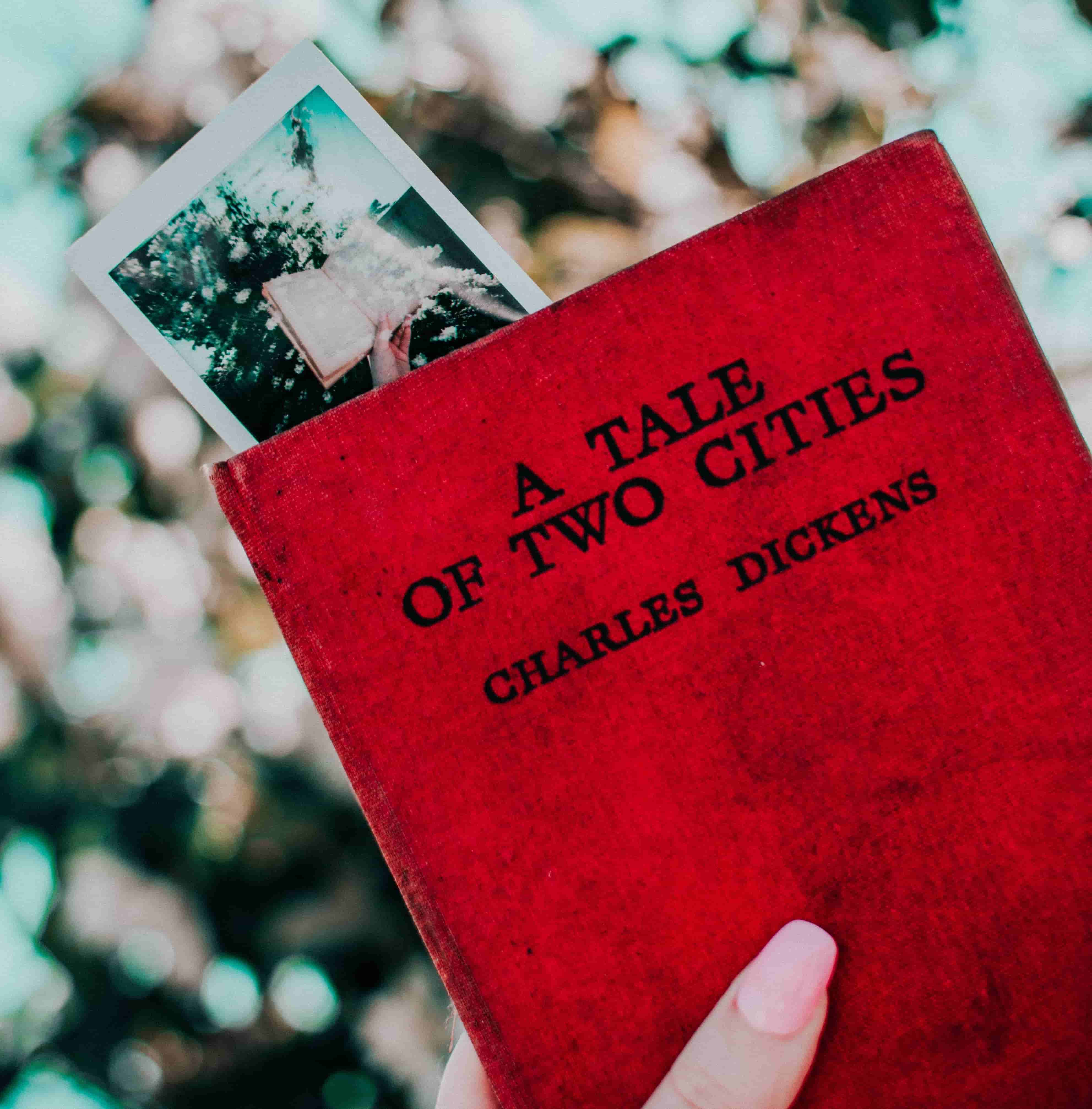The Shoemaker
”The Shoemaker” is an extract from the historical novel titled ‘The Tale of Two Cities’ written by Charles Dickens. The novel is set in London and Paris. All you need to know and learn about this poem is given below.
Meet the Author
- Charles Dickens is a well-known Victorian (19 century) novelist and short story writer.
- Born: 7th February 1812
- Died: 1870
- Place of Birth: Landport, United Kingdom
- Major Books: ‘A Christmas Carol’, ‘David Copperfield’ and ‘Hard Times’.
- Best known for: Interesting plot twists, mysteries and cliffhangers.
Historical background to the novel:
French revolution: The French revolution happened during the year 1789.
Here is a short history on the French revolution:The 18th century was a time of enlightenment in the European continent. Ideologies and beliefs over religion and social structures were falling apart along with the rise of the middle class followed by the industrial revolution. These changes were also due to the influence of print culture and the American revolution.
France was a feudal society. It consisted of three estates. First estate is the clergy, second estate is nobility and the third estate is the commoners (peasants & middle class). The third estate made up 98% of the entire population.
Even then, only the third estate was asked to pay taxes. They had to pay taxes not just to the first estate but also to the second estate. This made them furious especially when new tax reforms were brought as France was under debt due to its aid given to the American revolution.
Soon a revolution broke out and the third estate tried to reclaim democracy and formed a new republic. They formed the national assembly and burned down the Bastille prison which was a symbol of monarchy. Louis XVI the King of France tried to escape in the year 1791 due to the revolution. Therefore, people lost trust in their king and beheaded him publicly. Soon a reign of terror broke out in France killing atleast 20,000 people from the first and second estates.
The feudal system was abolished and individual rights and freedom came into place. The new constitution was based on ‘equality’, ‘fraternity’ and ‘liberty’.

Summary of the Chapter
Dr. Manette is released from the Bastille prison after serving 18 years in it. He was an innocent man but was imprisoned for his involvement with the aristocratic family. Dr. Manette belonged to the third estate.
He had a faithful servant named “Defarge” who took care of him after his release. For the longest time Lucie Dr. Manette’s daughter believed her father to be dead. But after his release he gets to know about her father being still alive. Mr. Lorry was Lucie’s local guardian and took her to meet her father.
Dr. Manette (shoemaker) is seen to be engrossed in the act of shoe making. This is a skill he learned over time and it was not his earlier occupation. He was sitting there with a white beard which was raggedly cut, a hollow face and bright eyes. From his appearance reader’s can understand that he was not in the best of health. His hollow and thin face displays his hardships.
Through the opening of his pale yellow shirt it is understood that he has a withered and worn out body. Every bone in his body was visible to the viewer. This is the result of his life spent in the Bastille prison for a crime that he never committed.
He and his old canvas frock and his loose stockings and all his poor tatters of clothes, had, in a long seclusion from direct light and air, faded down to such a dull uniformity of parchment-yellow, that it would have been hard to say which was which.
He seems to have lost his ability to associate with sound. When he hears a sound or spots someone near him instead of looking at them straight he will first look down on his both sides. It is as if he forgot how to speak and answer someone.
When Defarge enters the room with Mr.Lorry, Dr. Manette does the same. Defrage goes on to ask him if he was planning to finish that shoes that day itself. He looks confused and replies that he wishes to complete it by that day itself. Then Defarge introduces Lorry to him by stating that he had got a visitor. Mr. Lorry picks up one of the shoes and starts to examine it. The shoemaker goes on to say that it is the latest fashion lady’s shoe.
It’s a lady’s shoe. It is a young lady’s walking-shoe. It is in the present mode.
Then Defarge asks him his name. Shoemaker does not understand the question at first and asks him to repeat it once again. Then he goes on to answer stating that his name was “One Hundred and Five, North Tower”. Then he gets back to work again.
Later Mr. Lorry goes on to tell the shoemaker that he wasn’t a shoemaker by trade. He then agrees to Mr. Lorry’s statement. Then the shoemaker goes on to say that he learned this by practice and it was not an easy process.
I asked leave to teach myself, and I got it with much difficulty after a long while, and I have made shoes ever since.
Then Lorry goes on to ask him whether he remembers him at all.
Monsieur Manette, do you remember nothing of me?
The shoe dropped from Dr. Manette’s hand and then he started to stare at Lorry. Defarge also whispers the question but in vain. Then his daughter who was sitting at the entrance of the attic (garret) moved closer to Dr.Manette.
She stood, like a spirit, beside him, and he bent over his work.
He took the shoemaker’s knife and again stooped to work, but her skirt got his attention. He raised his eyes to look at her face. Both caught the attention. She was not afraid to stand near him while he held a knife. He first stared at her with fear but later his lips began to form words but no sound came out of it.
He stared at her with a fearful look, and after a while, his lips began to form some words, though no sound proceeded from them.
Topics addressed by Charles Dickens in his works: (Bonus)
He tries to bring out the absurdity of human behaviour and also talks and discuss is about living conditions during the industrial and French revolution.
As a child when Charles Dickens had to go into child labour to sustain himself.
He portrays the dual nature of Victorian life, the first one which portrays the modernity and social mobility offered by industrialisation and the share divide in the society between the rich and the poor.
He is known for his interesting plots, mysteries and cliffhangers. She has incorporated satire in his writings. Most of the stories which are now presented as a novel were earlier published as series.
Above and Beyond the Text
Charles Dickens is known for his children’s fiction. There is plenty of children's fiction written by eminent writers. If you are confused about choosing your next book, pick from the list provided.
Oliver Twist
This is a classic tale by Charles Dickens that will take you on an adventure. It is a must-read for all children.
Alice in Wonderland
Lewis Caroll paints a fantastic picture with this adventurous tale of Alice. This is a fun read for any young mind. It will enlighten your creativity and intrigue you to dream of a parallel world.
A Christmas Carol
This story of love and forgiveness will teach you a lot of morals. The book is an interesting and enjoyable read.
Share Options
Get Personalized Tuitions
We offer premium education on a personalized level. Online tuition for all grades, tailor-made!

The Shoemaker Questions and Answers
Below are a few questions that you can look out for your examinations and class tests. Stand out with perfectly written answers with help of Aneetta Class.
The shoemaker had a pale, thin face. He looked weak and withered. He also had bright eyes and dark eyebrows. His beard was grey and he was thin.
The young lady is his daughter and she seems to know more about the shoemaker than the other two men. He seems to recognise her at the end as he was attempting to speak certain things.
Defarge was constantly evoking memories in the prisoner. He also tried to persuade the prisoner by making his acquaintances speak with him. Defarge kept on conversing with him even to help him speak and understand.
MCQ And RTC
Revise and master this essential ICSE chapter with carefully prepared interactive MCQs, RTCs, and comprehensive workbook solutions.
Start Your Test